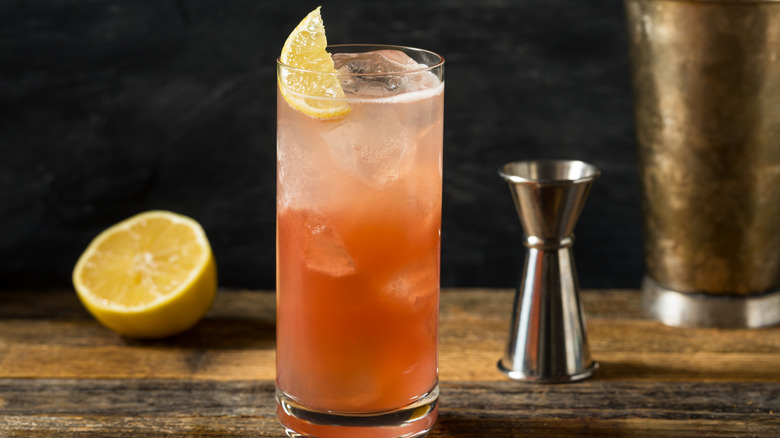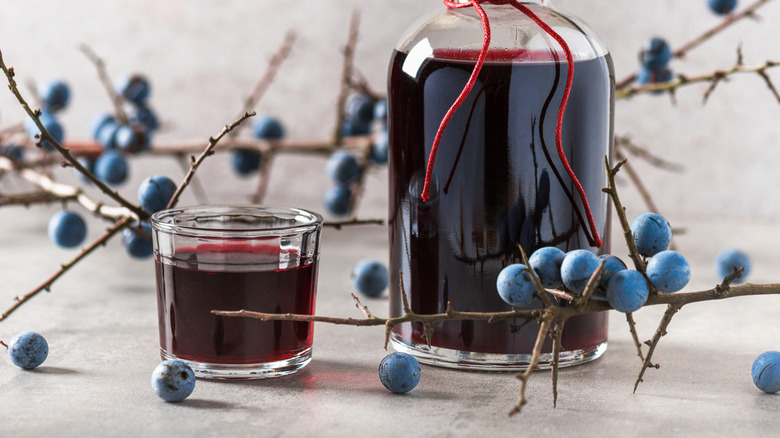This Retro Gin Cocktail Is Perfect For Summer — And It's Not Gin And Tonic
If you're looking for the perfect balance of sweet, tart, and refreshing, impress your friends with this low-ABV, easy-sipping summer cocktail: the sloe gin fizz. This retro beverage is made with gin, club soda, an optional egg white, and is sweetened to your taste. Loved by the British for good reason, it's sophisticated, but still playful enough to be casual. With complex notes on the front end, it features deep, jammy, stone-fruit notes, but finishes clean with a slightly bitter aftertaste.
The typical berry used to make sloe gin, the blackthorn berry, is actually not a berry at all — it's a bitter stone fruit or plum, with a waxy skin. By itself, it's unappetizing, but when used to create something such as sloe gin, the flavor profile opens up to something unexpectedly delicious, with earthy and floral components that complement a variety of different beverage profiles, regardless of the occasion.
What is sloe gin used for?
While normal gin is around 40-50% ABV, sloe gin's ABV is actually much lower, at 20%-30% depending on the producer. This is because sloe gin is actually a liqueur. The gin is distilled first, and later infused with a macerated mixture of sloe berries and sugar, for a final product that drinks with the depth of liqueur rather than gin. While it's traditionally consumed during the holidays since the fruit comes into season during the fall, sloe gin can be consumed year-round.
Producers in the United States, where the sloe berry is less common, will often add their own ingredients and takes, such as blueberries, pomegranates, and other stone fruits or berries, allowing the spirit a variety of different ways to be enjoyed. Besides the classic sloe gin fizz, it would swap nicely for the gin in a French 75 to create a berry-forward summer version. Similar to vermouth, it makes an excellent substitute for vermouth in drinks like Negronis, especially if you can grab the American-made version from Spirit Works, which uses a charred whiskey barrel for a more complex profile. Because of its versatility, it really can be swapped in for an alternative for any gin cocktail, like a Gimlet or Tom Collins.

